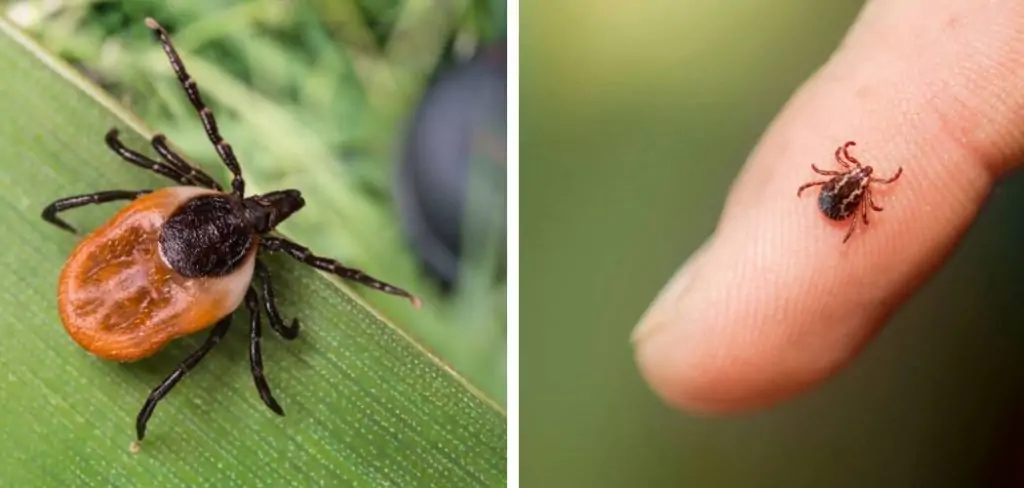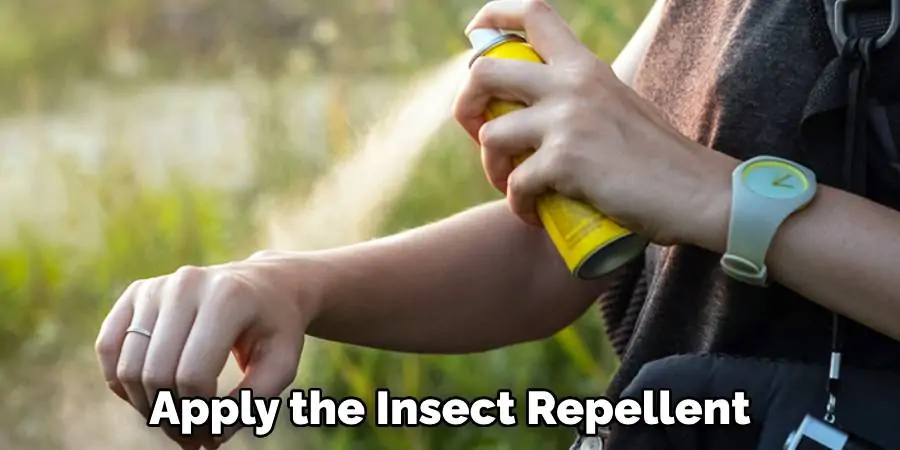Hiking is an exciting and rewarding activity that allows you to explore the beauty of nature. However, it’s not without its risks. One of these risks that nature explorers often overlook is ticks. These tiny creatures can pose a significant threat to our health due to their ability to transmit diseases such as Lyme disease. This guide will provide you with effective strategies on how to prevent tick bites while hiking and ensure that your hiking experience remains a safe and enjoyable one.

How to Remove a Tick Safely
Before discussing preventive measures, it’s essential to know how to remove a tick correctly and safely. If you find a tick on your skin, follow these steps:
- Use fine-tipped tweezers to grasp the tick as close to your skin’s surface as possible.
- Gently pull upward with steady pressure without twisting or squeezing the body.
- Once the tick is removed, clean the bite area and your hands with rubbing alcohol or soap and water.
- Dispose of the tick by flushing it down the toilet or placing it in a sealed bag/container.
It’s crucial to remove ticks as soon as possible because they can transmit diseases within 24 hours of attaching themselves to your skin. If you experience any symptoms such as rash, fever, or body aches after removing a tick, seek medical attention immediately.
Step-by-Step Guide for How to Prevent Tick Bites while Hiking
Step 1: Wear Protective Clothing
Your choice of clothing can play a significant role in preventing tick bites. Opt for long-sleeved shirts and pants instead of shorts and t-shirts. Tuck your pants into your socks to create a physical barrier that prevents ticks from crawling up your legs. Additionally, wear closed-toe shoes to protect your feet. Light-colored clothing is recommended as it can make spotting ticks easier before they get a chance to latch onto your skin.
Step 2: Use Insect Repellent

Insect repellents are an effective way to deter ticks. Choose a product that contains 20 to 30 percent DEET, which is known to repel ticks effectively. Apply the insect repellent on exposed skin as well as on your clothing, paying close attention to your legs, hands, and neck. Remember to spray the repellent on the outside of your shoes as well. Spray the repellent on your skin before heading out on your hike. Be sure to reapply as directed on the label. Avoid contact with eyes and mouth, and wash your hands thoroughly after application.
Step 3: Stay on Designated Trails
Staying on designated trails while hiking can significantly reduce your visibility to ticks. Ticks usually reside in grassy, bushy, or wooded areas and are less likely to be found on well-trodden paths. Avoid walking through dense vegetation and straying off the marked trails. Also, resist the temptation to sit on logs or rocks where ticks may be present. By sticking to the path, you reduce your risk of coming into contact with these tiny creatures. Remember, the more direct contact you have with nature, the higher the risk of tick bites.
Step 4: Check Yourself Regularly
Perform regular checks on yourself during and after your hike. Ticks often attach to the body in hard-to-reach places. Check your entire body, paying particular attention to under the arms, in and around the ears, inside the belly button, back of the knees, in and around all head and body hair, between the legs, around your waistband, and between your toes. Use a hand-held or full-length mirror to view all parts of your body. Be vigilant, as ticks can be as small as a poppy seed. If you’re hiking with a partner or group, help each other to check for ticks to ensure a thorough inspection. Remember, early removal of ticks can prevent the transmission of diseases.

Step 5: Shower After Hiking
Showering immediately after your hike not only refreshes you but also provides an additional opportunity to spot and remove any ticks that might have attached to your body. Use a washcloth to thoroughly clean your body as this may also help in dislodging ticks. After showering, conduct a final tick check. This is especially important as it gives you another chance to find and remove any ticks that might have been missed in your initial checks. Remember, early detection and removal of ticks can significantly reduce the risk of contracting tick-borne diseases.
Step 6: Treat Clothing With Permethrin
Treating your clothing and gear with permethrin, an insecticide can effectively repel ticks and other insects. Permethrin-treated clothing is beneficial because the protection lasts through several washes, unlike topical insect repellents applied to skin which must be reapplied frequently. You have two options for this – you can either purchase clothing pre-treated with permethrin, or you can treat your own clothing at home.
For the latter, you can use a permethrin spray or a soak method. When spraying, be sure to cover all areas of the clothing and allow it to dry completely before wearing. If you prefer the soak method, immerse the clothes completely in the permethrin solution, then allow them to air dry. Always follow the manufacturer’s instructions on the permethrin product to ensure safe and effective usage. This extra layer of protection can significantly decrease the chance of ticks attaching to your clothing and reaching your skin.
Step 7: Consult a Doctor if Necessary
If you notice any unusual symptoms within a few weeks of removing a tick, such as fever, chills, aches, and pains, or a rash, it’s important to consult a doctor promptly. These symptoms could potentially indicate the onset of a tick-borne illness, such as Lyme disease. Lyme disease, if left untreated, can lead to severe health complications but can usually be treated effectively with antibiotics if caught early. Therefore, don’t hesitate to seek professional medical advice if you suspect you may have contracted a tick-borne disease. Stay vigilant and prioritize your health.

What Are the Symptoms of Tick-borne Illnesses?
If you’ve been bitten by a tick, it’s essential to keep an eye out for any unusual symptoms that may arise. Some common signs of tick-borne illnesses include fever, chills, headache, body aches and pains, fatigue, and rash. However, the type of tick-borne disease you contract can determine which specific symptoms you experience. For instance, Lyme disease is characterized by a rash called erythema migrans, which often appears as a bull’s eye pattern around the bite site.
Other tick-borne illnesses, such as Rocky Mountain spotted fever and Colorado tick fever, can cause similar flu-like symptoms but may also lead to more severe complications if left untreated. It’s crucial to seek medical attention if you experience any of these symptoms after a tick bite. Remember, early detection and treatment are key to preventing further health complications.
Frequently Asked Question
What is the Best Tick Repellent for Hiking?
The best tick repellent for hiking is one that contains 20 to 30 percent DEET. This ingredient has been proven to effectively repel ticks. It’s crucial to spray the repellent not only on exposed skin but also on your clothing, including shoes, for maximum protection. Always remember to follow the application instructions provided on the product label for safe and effective use.
How Do You Prevent Ticks From Biting You?
There are several steps you can take to prevent ticks from biting you while hiking. These include:
- Staying on designated trails
- Wearing long-sleeved shirts and pants tucked into socks or boots
- Applying insect repellent containing DEET to exposed skin and clothing
- Checking your body for ticks regularly during and after your hike
- Showering immediately after your hike to remove any ticks that may have attached
- Treating your clothing and gear with permethrin, an insecticide, for added protection
How Can You Reduce the Risk of a Tick Bite?
To reduce the risk of a tick bite, it’s important to take necessary precautions such as wearing appropriate clothing and using insect repellent. Additionally, avoiding areas with high grass or leaf litter can also help lower the chances of encountering ticks. If you do happen to come in contact with potential tick habitats, be sure to thoroughly check your body for ticks and remove them promptly.

Conclusion
So there you have it, a comprehensive step-by-step guide for how to prevent tick bites while hiking. By following these simple but effective tips, you can ensure a safe and enjoyable outdoor experience without the worry of tick-borne illnesses. From choosing appropriate clothing to using insect repellent with DEET, each step plays an important role in minimizing your risk of encountering ticks on your hike.
But remember, the prevention measures don’t stop once you leave the trail – make sure to thoroughly check yourself and your gear for ticks after your hike as well. Always be aware of any symptoms that may arise after a tick bite, as early detection and treatment are key in preventing serious health complications. So next time you hit the trails, don’t let fear of ticks hold you back from enjoying nature. Follow these precautions and embrace the great outdoors with confidence and peace of mind!
